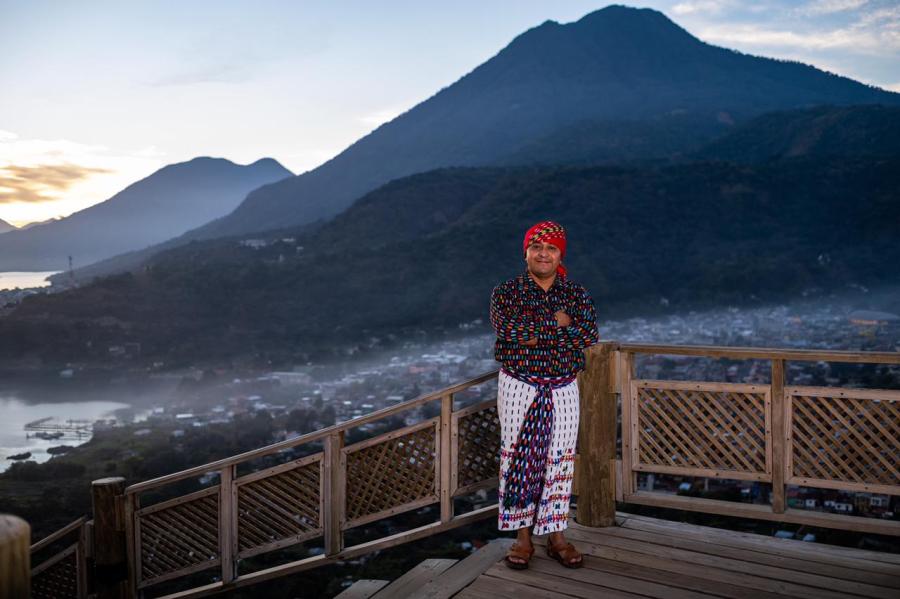The Harvard Chiapas Project was founded in 1957 under the aegis and with the cooperation of the Instituto Nacional Indingenista (National Indian Institute) directed by the late Dr. Alfonso Caso to describe the basic ethnography and to track and analyze the trends of change in Mayan communities of the Highlands of Chiapas (see Vogt 1990 for more details).
The advantages of this long-range anthropological project are evident in the penetrating and sophisticated accompanying articles by my former students and colleagues Frank Cancian, George A. Collier, and Gary H. Gossen, Ronald Nigh, Duncan Earle and Peter Brown are "academic grandsons" by virtue of having studied with Collier, Gossen and Canacian respectively.
We are also fortunate enough to have the profound analysis of James D. Nations. Since my younger colleagues have so expertly covered the economic and political ground, I shall focus my comments on the ritual and supernatural aspects of this 1994 Mayan rebellion.
The Mayas, with a population of over 5 million, are the second largest indigenous population in the western hemisphere, next only to the 10 million Quechua-speaking descendants of the Inca in the Andes. The 1994 rebellion in Chiapas is not the first; indeed, there have been five major Maya rebellions - two in Chiapas, two in Yucatan, and one in Guatemala - as well as many minor ones during the tumultuous centuries since Spanish Conquest.
All of the previous rebellions have been characterized by important supernatural and/or sacred aspects. For example, during the Caste War of Yucatan (1847-1901), during which the Mayas almost succeeded in conquering Merida, the rebels discovered a talking cross in a cenote in eastern Quintana Roo. This cross provided proclamations from Dios urging the Mayas to attack the Whites and became the focus of an influential cult. The Chamula War of Santa Rosa (also called the Cuzcat Rebellion) of 1867-70 was triggered when a Chamula girl, Augustina Gomes Checheb, herding sheep saw three stones fall from the sky. Pedro Diaz Cuzcat, the Chamula official sent to investigate, took the stones home with him and put them in a box. The stones soon began to talk, and Cuzcat convinced arriving Indian pilgrims that Augustina had given birth to them and was therefore "the Mother of God". During this rebellion the Chamulas came closer to taking over San Cristobal Las Casas, the major city in the Chiapas Highlands (Bricker 1981).
What about the present Zapatista movement? For a time, I wondered why the eloquent leader, Marcos, was only a sub-comandante. Who was the comandante? Could it perhaps be Dios or the Ancient Maya Sun God? But it was finally disclosed that Marcos is subordinate to the Clandestine Indigenous Revolutionary Committee composed of leaders from the various Mayan groups in Chiapas.
Then I wondered if perhaps there existed a small chapel in the Lacandon rain forest which contained an image of a new santo (saint) in the form of Emiliano Zapata called San Emiliano. However, no evidence emerged.
Perhaps the fact that the negotiations between the Mexican government and the masked rebels took place in the Cathedral of San Cristobal Las Casas and that the mediator was the Bishop Samuel Ruiz Garcia provided the sacred, supernatural aspects for this 1994 Maya rebellion.
Then, after some weeks more bits of evidence on the rituals of the Zapatistas emerged. In an interview to the press on March 18 the mayor Mario of the EZLN described how this Zapatista Army of National Liberation was founded on November 16, 1983 by fife idealists from northern Mexico. The revered leader of the five was later killed in a training accident. Since the leader was left-handed, the Zapatistas now salute the Mexican flag with their left hand (in memory of their fallen leader), a ritual act that was misunderstood, and considered an insult, as the rebel leaders came into the Cathedral in San Cristobal Las Casas.
More importantly, in mid-March shamans representing the five Mayan groups in Chiapas - Tzotzil, Tzeltal, Tojolbal, Chol, and Mam - arrived at the Classic Maya site of Palenque. The shamans climbed the steps of the Temple of the Inscriptions in which Lord Pacal was entombed in A.D. 683 and set up a sacred shrine with multi-colored candles, copal incense, and wild plants. While copal burned in the large censer, symbolizing "the heart of heaven and heart of earth", and the candles flickered, the shamans prayed to Lord Pacal for peace in Chiapas. They then announced that the Fifth Sun (in Mesoamerican time) characterized by hunger and disease had ended and that the Sixth Sun had begun - an era of the dawning of hope and unity for the Pueblos Indígenas (the indigenous peoples)!
Further, the last elderly member of the original Zapatista army was recently interviewed by the press in Mexico. He declared that Zapatista did not die when he was shot by the Mexican army in 1919 but had gone off to the East and would return - shades of Quetzalcoatl! Perhaps, Ron Nigh is prophetic, in more ways than one, when he entitles his article "Zapata Rose in 1994".
Article copyright Cultural Survival, Inc.


